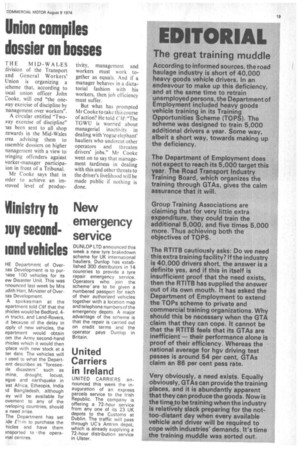EDITORIAL
Page 21

If you've noticed an error in this article please click here to report it so we can fix it.
The great training muddle
According to informed sources, the road haulage industry is short of 40,000 heavy goods vehicle drivers. In an endeavour to make up this deficiency, and at the same time to retrain unemployed persons, the Department of Employment included heavy goods vehicle training in its Training• Opportunities Scheme (TOPS). The scheme was designed to train 5,000 additional drivers a year. Some way, albeit a short way, towards making up the deficiency.
The Department of Employment does not expect to reach its 5,000 target this year. The Road Transport Industry Training Board, which organizes the training through GTAs, gives the calm assurance that it will.
Group Training Associations are claiming that for very little extra expenditure, they could train the additional 5,000, and five times 5,000 more. Thus achieving both the objectives of TOPS.
The RTITB cautiously asks: Do we need this extra training facility? If the industry is 40,000 drivers short, the answer is a definite yes, and if this in itself is insufficient proof that the need exists, then the RTITB has supplied the answer out of its own mouth. It has asked the Department of Employment to extend the TOPs scheme to private and commercial training organizations. Why should this be necessary when the GTA claim that they can cope. It cannot be that the RTITB feels that its GTAs are inefficient — their performance alone is proof of their efficiency. Whereas the national average for hgv driving test passes is around 54 per cent, GTAs claim an 86 per cent pass rate.
Very obviously, a need exists. Equally obviously, GTAs can provide the training places, and it is abundantly apparent that they can produce the goods. Now is the time to be training when the industry is relatively slack preparing for the nottoo-distant day when every available vehicle and driver will be required to cope with industries' demands. It's time the training muddle was sorted out.
































































































































